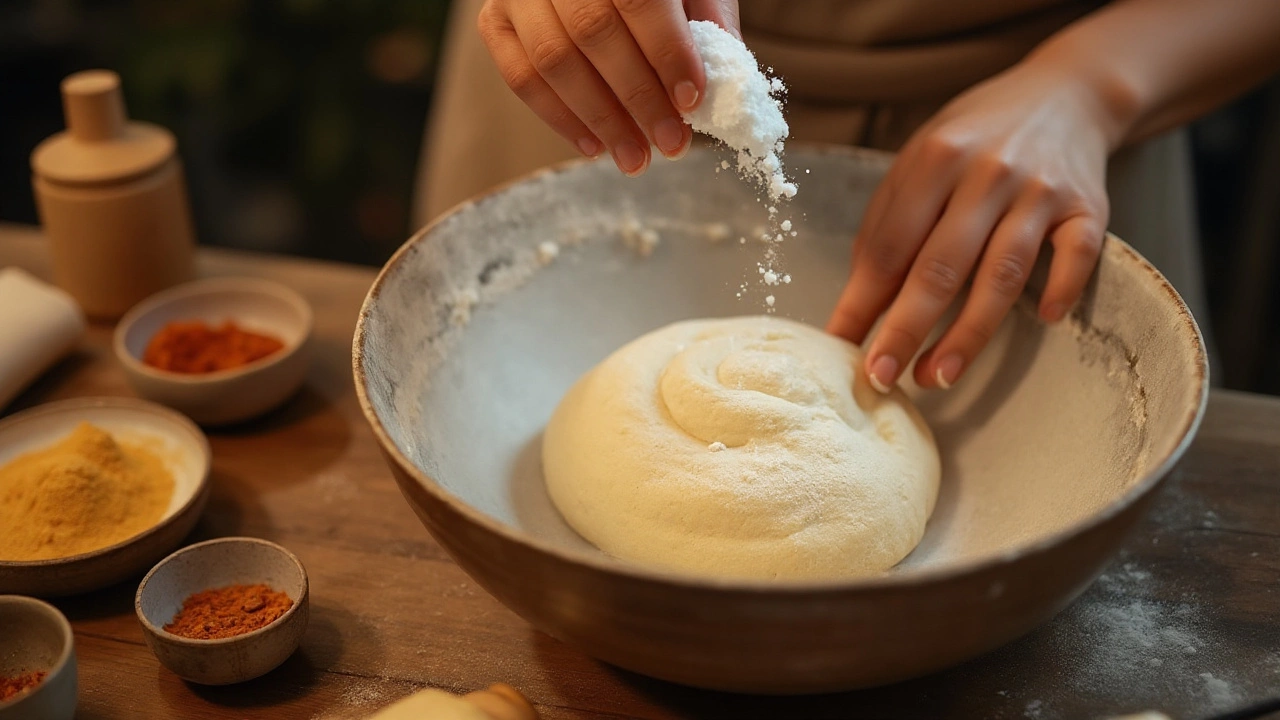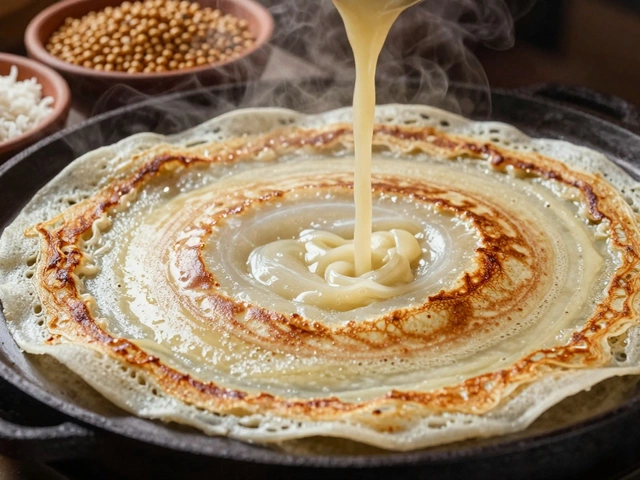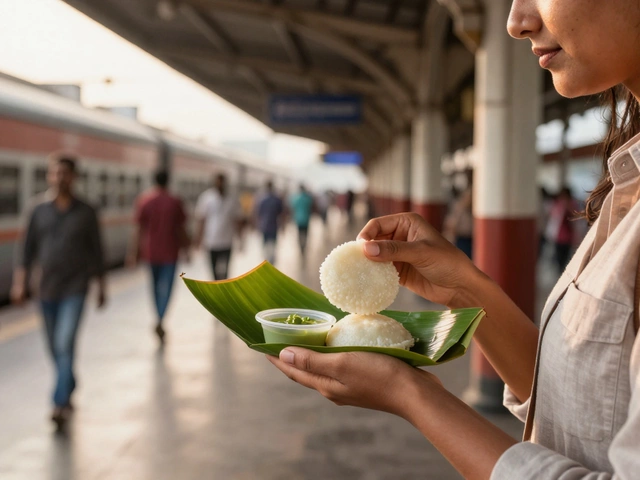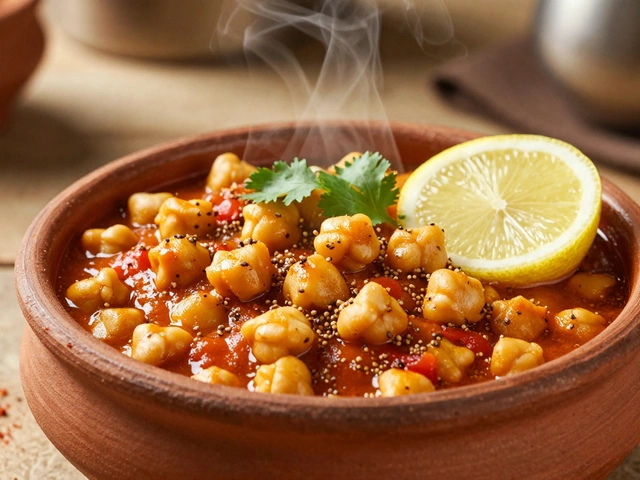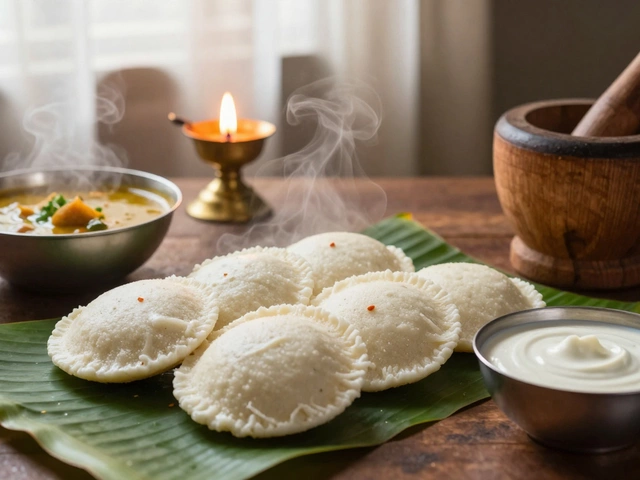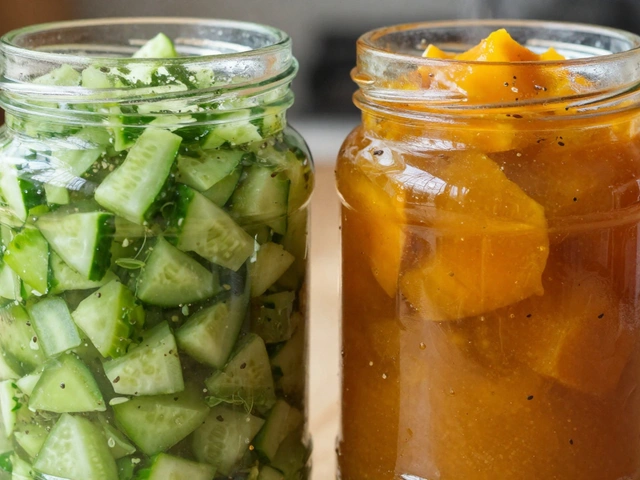When it comes to making the perfect roti, texture is everything. Many home cooks and professional chefs alike strive for that wonderfully soft, melt-in-your-mouth quality. Could baking soda be the key to achieving such culinary delight? This simple ingredient, commonly found in most kitchen cupboards, might just be the game changer in your dough-preparation routine.
In this deep dive, we will explore how baking soda can impact your roti-making adventures. By understanding the role it plays in the chemistry of dough, alongside the right way and amount to use, you'll be better equipped to create the softest flatbreads imaginable. Let’s uncover these secrets and transform your usual cooking process into an art.
- Understanding Baking Soda
- The Science Behind Soft Roti
- Proper Usage in Dough
- Advantages and Disadvantages
- Tips for Perfect Rotis
Understanding Baking Soda
Baking soda, or sodium bicarbonate, is a versatile and invaluable component in the culinary world, well-known for its leavening properties. This simple yet powerful ingredient is an alkaline compound that, when combined with an acid, reacts to produce carbon dioxide gas. The bubbles formed from this reaction get trapped in the dough, causing it to rise and become airy. This characteristic makes baking soda a popular choice in a variety of baked goods. Its use in making softer, fluffier roti is a testament to its versatility beyond the realm of cookies and cakes.
The beauty of baking soda lies not just in its chemical reactions that help create thickness and volume in dough, but also in its ability to influence texture and tenderness. When adequately employed, it can achieve a remarkable transformation in flatbreads like roti, making them supple and soft. However, understanding the balance is crucial, as excessive use can lead to a harsh, soapy aftertaste and an unappealing color change in your dough. It’s this delicate balance that turns baking soda from a humble kitchen staple into a powerful ally in your cooking arsenal.
Beyond its leavening ability, baking soda also offers a tenderizing effect, breaking down proteins and softening gluten strands in flour. This action assists in achieving the desired softness in the final product. While experimenting with baking soda, it is important to keep in mind its partiality for precision. A small variation in measure can significantly impact the outcome, underlining the importance of careful measurement. As the culinary expert Julia Child famously stated,
"In cooking you’ve got to have a what-the-hell attitude."While experimenting with new methods and measures, striking balance and precision is key to unlocking baking soda’s fullest potential.
For those keen on the dietary side of things, baking soda in moderation can be deemed safe. It’s not only used to improve texture but also to maintain pH balance, which can potentially aid digestion. However, moderation remains critical, particularly for individuals with sodium-related dietary restrictions. While research continues to explore the health and culinary benefits of baking soda, its role in creating soft and delightful roti remains affirmed by traditional cooking practices. As you embark on your journey to perfecting your rotis, understanding and appreciating the nuances of baking soda can make all the difference, turning a simple act in the kitchen into a rewarding experience.
The Science Behind Soft Roti
At the heart of any perfect roti lies a delicate dance of chemistry, where each ingredient plays a unique part. One such player in this alchemy is baking soda, a common household item with the potential to create significantly softer roti. When added to dough, baking soda, known scientifically as sodium bicarbonate, works by releasing carbon dioxide gas when it encounters an acidic substance or liquid. This process is a form of chemical leavening, which helps to aerate the dough, creating an internal structure full of tiny air pockets. These pockets lead to roti that is fluffier and more tender.
Several scientific factors contribute to this transformation. For starters, the carbon dioxide gas forms bubbles, which are trapped by the elastic network of gluten that develops when kneading the dough. This network provides the necessary scaffolding that allows dough to expand without collapsing, substantially affecting the overall texture. Not only does baking soda affect the puffiness, but it also impacts the flavor profile in a subtle yet significant way, combating the naturally dense and flat characteristics of traditional roti.
It’s essential to strike the right balance when incorporating baking soda into your dough. Too much can lead to an overpowering taste or even a dough that lacks structural integrity, falling apart too easily. On the flip side, too little and the desired softness may not materialize. Expert chefs often recommend a ratio of about a teaspoon of baking soda for every two cups of flour, although this can vary based on factors like ingredient quality and personal taste preferences.
"Baking, at its core, is a science. It requires precision and understanding of how each component interacts with one another," says renowned baker and chemist, Harold McGee. "Using baking soda in roti can optimize texture, but one must appreciate the science behind it to do so effectively."
Notably, the role of roti dough hydration shouldn't be underestimated. Water not only activates the baking soda but also increases gluten formation, making judicious water use critical. To leverage the full potential of baking soda, it’s beneficial to use warm water, which accelerates the chemical reactions, yielding quicker gas production and, ultimately, fluffier bread.
In the quest to produce consistently soft roti, understanding these science-backed principles is a game-changer, providing insights that take homemade flatbreads from good to extraordinary.

Proper Usage in Dough
When it comes to integrating baking soda into your roti dough, precision is key. It's not just about tossing a pinch into the mix and hoping for the best. Baking soda's unique properties depend on its chemical reaction with acids, releasing carbon dioxide gas that contributes to a softer dough. This is why it's essential to understand not just how much to use, but what it interacts with in the dough. An imbalance could lead to undesirable textures or flavors, which is why clarity in the amount is crucial. Typically, for making rotis, a quarter to half a teaspoon of baking soda per cup of flour is sufficient. Understanding the dough's composition can lead you from a remedial bread to a soft, pliable culinary masterpiece.
For those trying it out for the first time, the type of flour matters too. All-purpose flour reacts differently than whole wheat, and this must be accounted for when measuring. Moreover, pairing baking soda with a mild acidic component, like lemon juice or yogurt, can amplify its leavening effects, leading to a softer texture. Acidic components should be subtle; they work as hidden partners, not overpowering flavors altering your roti's traditional taste.
Let's break it down into a useful process. Start by sifting your flour thoroughly to ensure uniformity and remove any lumps that may disrupt the texture. Then, mix your baking soda evenly with the flour, preferably using a whisk. Add your preferred acidic component, whether it's yogurt or lemon juice, mixing it gently before introducing water to form the dough. Knead with a firm, consistent pressure, avoiding overworking the dough which can lead to a firmer texture. Allowing the dough to rest for about 15-30 minutes gives the lifting agents time to activate, enhancing the softness of your final product.
Keep in mind that baking is as much a science as it is an art. A respected food scientist once reflected,
"The perfect balance of ingredients transforms a simple dough into a cloud-like, soft embrace."This speaks to the heart of employing proper methods to achieve that ideal texture. Achieving softness in rotis isn't just a matter of luck; it requires understanding and harnessing the chemical reactions that turn a simple mix into a staple delight. Finding the right balance not only elevates your flatbread's quality but also opens the door to numerous variations and personal touches in your roti-making art.
Advantages and Disadvantages
When considering the use of baking soda in roti dough, it's essential to weigh both the pros and cons. This ingredient can indeed transform your flatbreads, but it's crucial to understand just how it affects the final product. On the upside, baking soda is known for giving rotis a lightweight and airy texture, which is why many swear by it. The alkaline nature of baking soda helps in neutralizing acids and raising the pH level of the dough. This encourages the breakdown of gluten, which can make the dough softer and less chewy, resulting in soft roti that can melt in your mouth. However, there's a delicate balance to maintain, as too much of this magic powder can ruin your batch.
The drawbacks are worth noting as well. Overuse of baking soda can lead to an unpleasant metallic taste, which certainly isn't desirable in your culinary creation. There's also the chance it might interfere with the natural tanginess that some enjoy in traditional doughs, as it affects the dough’s natural fermentation process. Moreover, excessive use can cause your rotis to become too crumbly, diverting far from their chewy and pliable cult status.
"Baking is all about precision," says esteemed baker Julia Jones, "and even a tiny variation can tip the scales dramatically." Carefully measuring baking soda can help avoid these pitfalls.
Another aspect is the nutritional value alteration. While it's generally considered neutral in terms of calories, the chemical reaction that lightens dough could potentially compromise its nutrient density. Some purists argue that any addition to authentic roti recipes detracts from its simplicity, which is a cornerstone of traditional cooking. On the bright side, if you're aiming for an elevated texture and don't mind modern adjustments, baking soda offers a quick fix for flatbread evolution. To make the most of its advantages and skirt around the hurdles, understanding proper measurement is key.
With that in mind, when you're incorporating baking soda, use precise amounts, often only a pinch in small batches. Pair it with the right mixing and kneading techniques to achieve the desired elasticity without risking flavor imbalance. Familiarize yourself with your personal preference for roti texture, as this will guide how much baking soda to incorporate. By knowing both sides of the coin, you can expertly wield this ingredient to enhance your roti-crafting prowess, blending tradition with delightful innovation.
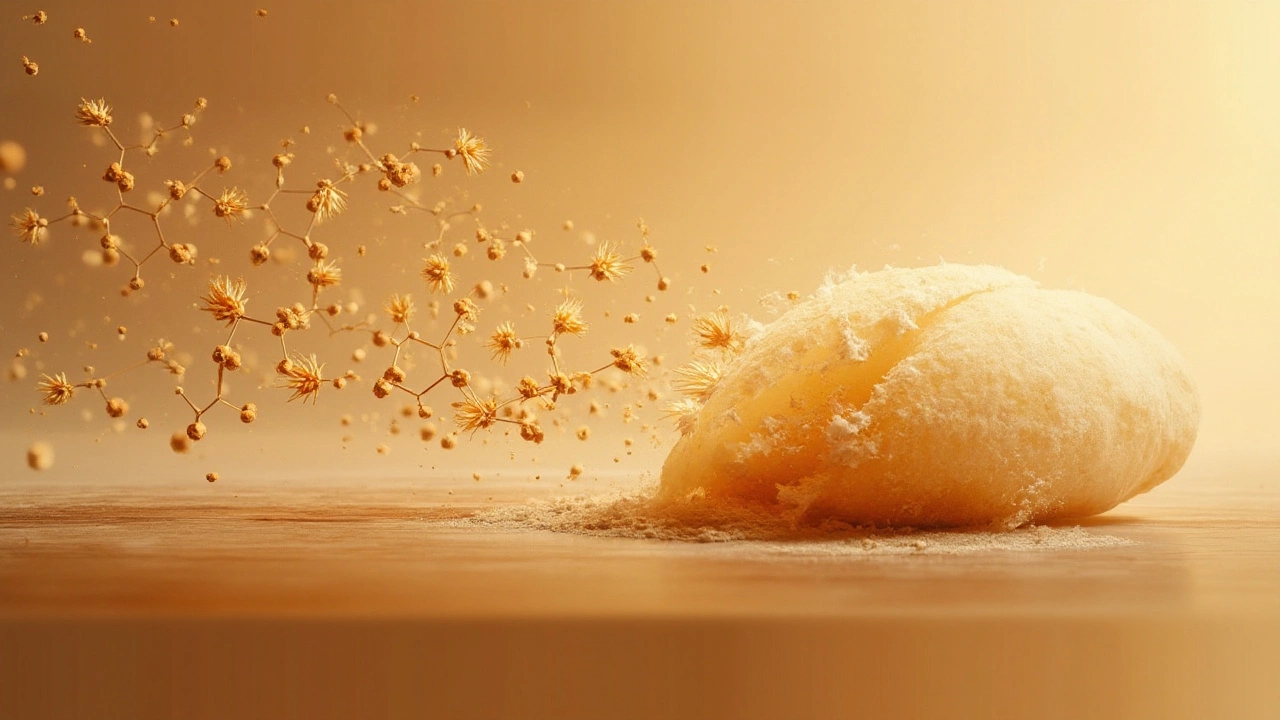
Tips for Perfect Rotis
Creating the perfect roti is both an art and a science, where balance and precision play pivotal roles. To ensure your rotis turn out soft and inviting, it’s important to begin with your dough – the foundation of a perfect flatbread. Ensure that the flour you are using is of good quality, preferably whole wheat flour which contributes to the deliciously soft texture. Be attentive to the water-to-flour ratio, as too much water will result in sticky dough while too little will lead to hard rotis. Start with a smaller amount of water, gradually adding more as needed until you achieve a smooth, supple dough.
When using baking soda to improve the softness of your rotis, a little goes a long way. Using just a pinch in your dough can make a noticeable difference without altering the natural taste. Knead your dough thoroughly, which involves working it with your hands long enough to develop the gluten; this will enhance the elasticity necessary for rolling out thin, even discs. Speaking of rolling, rotate the dough between each pass with your rolling pin to maintain a uniform thickness.
It's vital that your cooking surface is at the right temperature when you begin cooking the rotis. A moderately hot tawa or griddle will yield the best results. Nourish patience as one side of the roti starts to lightly brown before flipping it over to cook the other side. Press gently around the edges with a spatula to encourage puffing, and you’ll see beautiful, airy rotis reminiscent of yeast breads. A crucial aspect, often overlooked, is the resting time of the dough. Allowing your dough to rest for at least 30 minutes after kneading not only allows the gluten to relax but gives the baking soda time to start working its magic.
Additional Flavor Tips
Add a personal touch by experimenting with flavors. Sometimes a sprinkle of dried herbs or a touch of crushed garlic and spices can add a unique depth to your roti dough. For those who enjoy a bit of a kick, adding a finely chopped chili or a spoonful of minced ginger can invigorate the palate. If you’re feeling adventurous, consider brushing a thin layer of ghee or butter on hot rotis to seal in softness and impart an enticing aroma.
As Nadiya Hussain, a beloved culinary expert, says, "Patience and practice are the two best ingredients for achieving perfect rotis every time." So, don’t be discouraged if your first attempts aren’t perfect. Like any great culinary art, mastery comes with time and a touch of experimentation. Following these carefully compiled tips, you are bound to elevate your roti-making skills and delight anyone lucky enough to share in your culinary creations.
